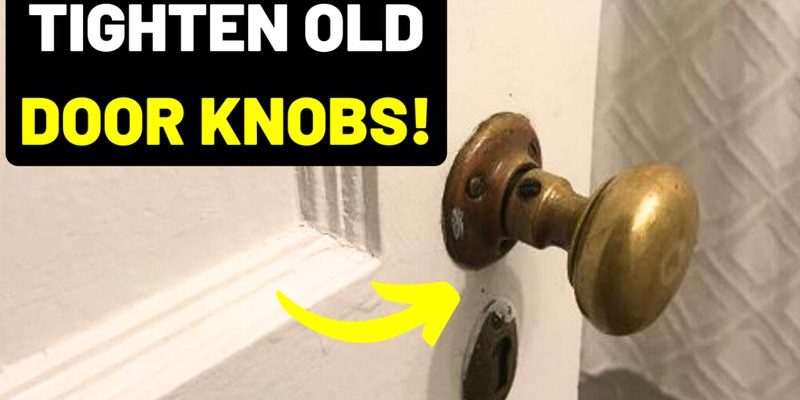
So, what causes that gritty feeling? It often has to do with dirt, lack of lubrication, or even manufacturing defects. Picture it like a well-used bike chain: if you don’t keep it clean and well-oiled, it’ll start to feel rough. Let’s dig deeper to understand this common problem—how it happens, what you can do about it, and maybe even prevent it from happening again.
Common Causes of Gritty Door Hardware
When you notice that rough feeling while operating your door hardware, it’s essential to investigate the root cause. Here are some of the most common culprits:
- Dirt and Debris: Over time, dust, dirt, and debris can accumulate around the hinges and within the mechanisms of your door hardware. Think of it like a tiny junkyard building up inside your door. This buildup can create friction, leading to that gritty sensation.
- Lack of Lubrication: Just like you wouldn’t want to ride a bike that hasn’t been oiled in ages, your door hardware also needs some TLC. Without proper lubrication, the moving parts can grind against each other, creating that unpleasant gritty feel.
- Corrosion: Depending on the material of your door hardware, it may be susceptible to rust and corrosion. If metal parts start to corrode, they can create rough edges that contribute to that gritty feeling when operated.
- Manufacturing Defects: Although less common, some door hardware might have defects from the manufacturer. These defects can prevent the parts from functioning smoothly and could be the source of your frustrations.
How to Troubleshoot Gritty Door Hardware
If your door hardware feels gritty, don’t worry! You can troubleshoot the issue in just a few easy steps. Here’s how:
Step 1: Inspect the Hardware
First, take a close look at your door hardware. You’ll want to examine the hinges, latch, and doorknob. Are there any visible signs of dirt or debris? If something looks out of place, that could be a sign of the problem.
Step 2: Clean the Area
Grab a soft cloth and some warm, soapy water. Gently wipe around the hinges and any crevices in the doorknob or latch. Be sure to get into those hard-to-reach spots. For stubborn grime, a soft brush (like an old toothbrush) can work wonders.
Step 3: Lubricate the Moving Parts
After cleaning, it’s time to lubricate. Use a silicone spray or a lightweight penetrating oil. Just a small amount goes a long way! Apply it to the hinges and any moving parts, then work it in by moving the door back and forth. You’ll notice a significant difference almost immediately.
Step 4: Check for Damage
Once you’ve cleaned and lubricated, check again for any damage. If your door hardware still feels gritty, it may be time to replace it. Don’t stress; door hardware isn’t too expensive, and replacing it can often solve your problems for good.
Preventive Measures for Smooth Door Operation
Now that you’ve tackled the gritty feeling, let’s ensure it doesn’t come back. Here are some preventive measures you can take:
- Regular Cleaning: Set a reminder to clean your door hardware every few months. A quick wipe down can keep dirt and grime at bay.
- Lubricate Periodically: Just like you change the oil in your car, make it a habit to lubricate your door hardware every six months. This keeps everything running smoothly.
- Watch the Weather: If you live in an area with high humidity or moisture, be mindful. Moisture can lead to rust, so consider using rust-resistant hardware to prevent future issues.
When to Replace Your Door Hardware
Sometimes, despite your best efforts, door hardware may need replacing. Here are signs that it’s time to invest in new hardware:
- Persistent Gritty Feel: If cleaning and lubrication don’t help, it’s likely time for a replacement.
- Visible Rust or Corrosion: If you see rust, don’t wait. Corroded hardware will only worsen.
- Loose or Wobbly Parts: If your doorknob or latch feels loose and wobbly, it’s time to look for new options.
Choosing the Right Replacement Hardware
If you’ve decided it’s time for a change, here are a few tips to help you choose the right replacement hardware:
- Material: Look for materials that won’t rust easily, like stainless steel or bronze. These choices tend to stand the test of time.
- Style: Consider the decor of your home. You want hardware that complements the style of your doors and overall aesthetic.
- Ease of Installation: Some hardware is easier to install than others. If you’re not a DIY expert, look for options that come with clear instructions.
Seek Professional Help if Needed
If you’re not comfortable tackling the issue yourself, or if you’ve tried everything and nothing seems to work, it might be time to call in a professional. A handyman or locksmith can quickly assess the situation and help find a solution that works for you.
In conclusion, that gritty feeling in your door hardware doesn’t have to be a persistent nuisance. With a bit of cleaning, lubrication, and care, you can keep your doors operating smoothly. So the next time you swing that door open, you can do it without the unwelcome sensation of grit. Remember, a little maintenance goes a long way!
